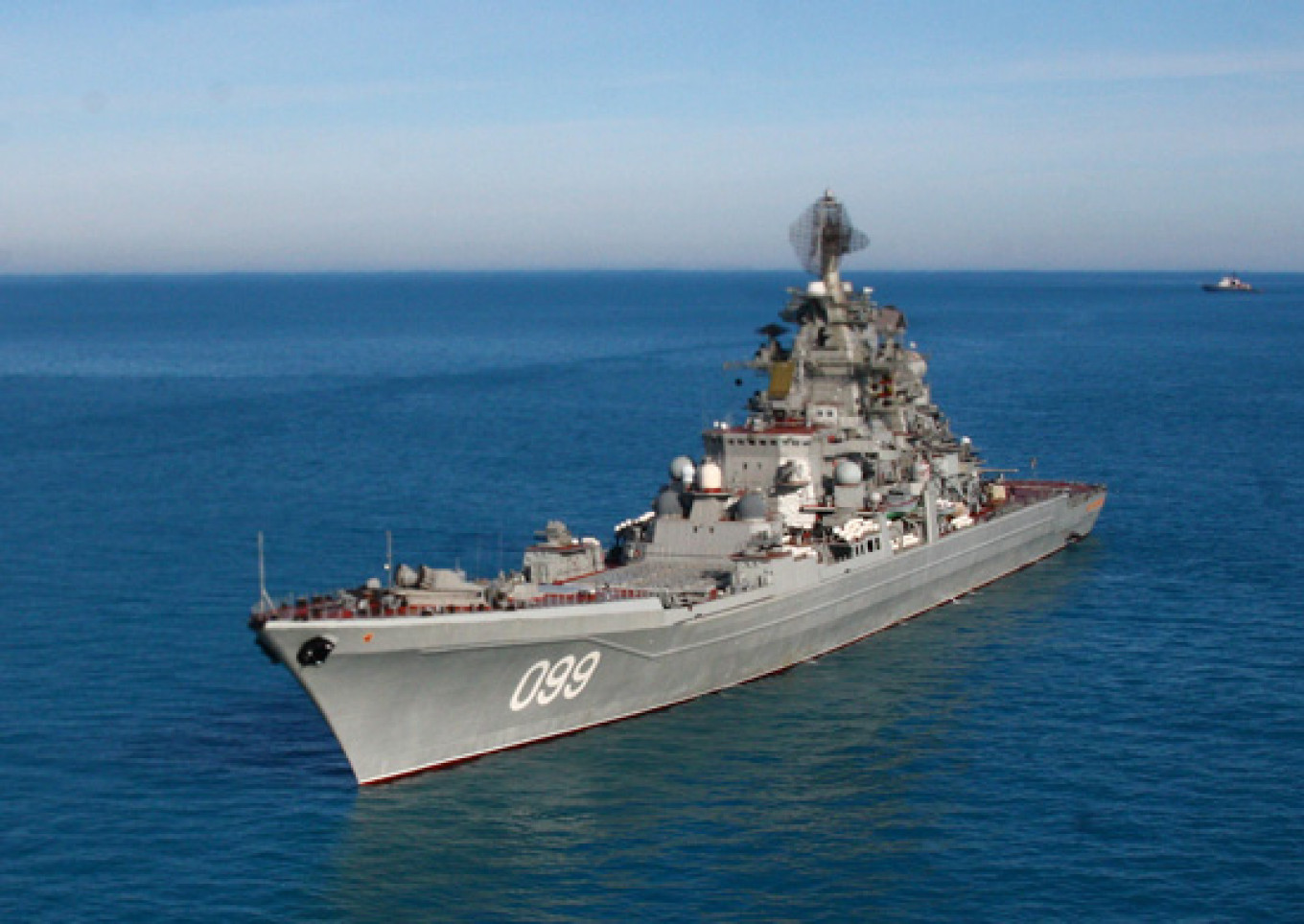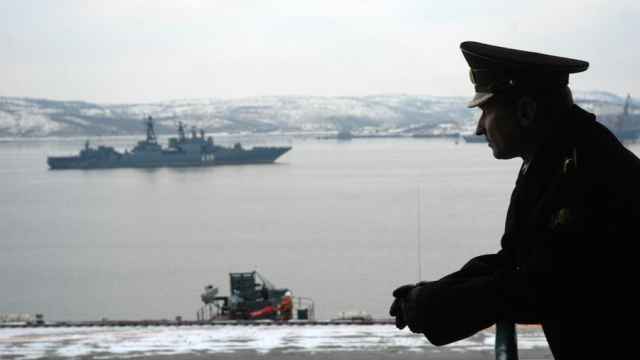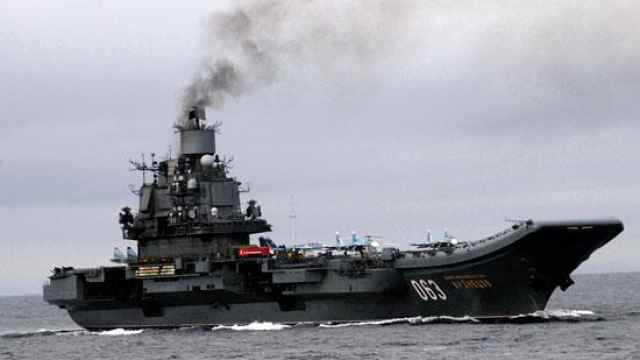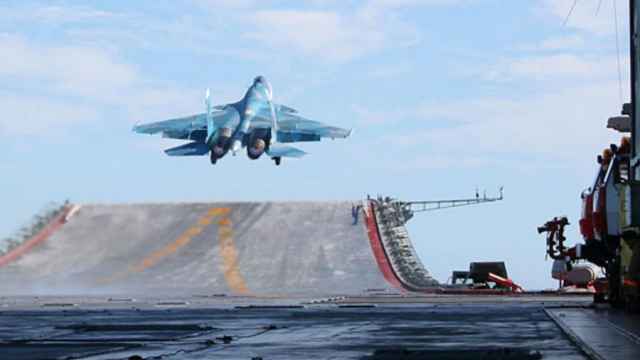In 1907, U.S. President Theodore Roosevelt had a message to send to the international community: America was no longer a regional backwater, but a great power in global affairs.
To deliver the
message, the jingoistic Roosevelt commissioned the construction of 16
brand-new warships. He had their hulls painted a stark white, rather
than the customary dull gray, to better catch the eye. And with that,
Roosevelt’s Great White Fleet – as the grouping came to be known
– spent the next two years audaciously parading the oceans in a
global publicity cruise.
Reportedly a keen
student of history, Russian President Vladimir Putin may have had
Roosevelt’s publicity stunt in mind when signing off on his navy’s
largest deployment since the end of the Cold War: eight ships,
including two of Russia’s most prominent warships, en route to
Syria. And they are cruising slowly off the coasts of every NATO
nation they pass.
But when the group,
led by the Russian navy's flagship – the Admiral Kuznetsov aircraft
carrier – entered the British channel, it was not met with the
alarmism typically prompted by Russian military maneuvers over the
past two years. Instead, the Kuznetsov's dramatic, billowing smoke –
hardly the image of a modern aircraft carrier – was ruthlessly
mocked. The battlegroup, it seemed, failed to impress.
“The Russian
Defense Ministry is not as good at image making as it claims to be,”
a source close to the ministry told The Moscow Times on a condition
of anonymity. “If they knew that this was going to be the
international community’s reaction, I am sure they would have
thought twice about this publicity stunt.”
But the lashing
Kuznetsov received in the international press missed the point. The
ship is traveling with some of Russia's heaviest hitting warships.
Their arrival off the coast of Syria will represent a major upgrade
to the Kremlin's available firepower in the region. The journey is
also being used by the navy to evaluate Kuznetsov's abilities, and
train its crew in combat situations.

Internal Motivations
Although the Kremlin clearly intended to use the Kuznetsov's battlegroup as an important outward projection of strength, the motivations behind the deployment are largely internal. The ship has never seen combat before. Syria, already serving as a testing ground for Russian military hardware, gives the navy an opportunity to train and evaluate the crew.
“There is no operational necessity to send the ship there, since we already have an airbase in Syria,” the Defense Ministry source said. Instead, beyond training the crew, it provides the navy with an excellent opportunity to evaluate the Kuznetsov's overall performance. The navy has been embroiled in a heated debate over the actual utility of the ship for years.
Kuznetsov has been a
financial burden since it was commissioned in 1990. Despite several
major overhauls to keep the ship operational, it has spent most of
its life in port. And it is due for another overhaul after completing
this current deployment to Syria. That should happen early next year,
since Kuznetsov has never spent more than six months at sea. When it does leave port, it is under the escort of the Nikolai Chiker, an ocean-going tugboat.
Russian navy brass and politicians see Kuznetsov as an important component of Moscow’s claim to great power status. Over the past two years, they have been lobbying for the construction of a new aircraft carrier to rival American designs. But others within the military see no real role for aircraft carriers in the Russian navy, which is oriented toward national defense rather than power projection abroad.
“Aircraft carriers are a waste of money for the Russian navy,” says retired Russian navy captain Maxim Shepovalenko, now an expert at the Moscow-based Center for the Analysis of Strategies and Technologies (CAST). They require the construction of large battlegroups to escort them, and far-off destinations worth sending them to. Russia can make due with land-based airfields.
Instead, given Russia's economic crisis, the navy should focus on its competitive advantage: a strong tradition of nuclear submarines, Shepovalenko says. This is, indeed, where a significant portion of Russia's 20 trillion ruble ($350 billion) military modernization drive is focused. But Kuznetsov's performance in Syria could tip money in favor of a new carrier.
In sending Kuznetsov to Syria, Russia is also promoting its defense industry. Russia sold Kuznetsov's sister ship to the Chinese, and refitted another old Soviet aircraft carrier for the Indian navy. It is hoping to sell Sukhoi and MiG aircraft outfitted for service on these types of ships to India for use on that ship.
Battlecruiser Diplomacy
The timing of Kuznetsovs's deployment has rattled defense circles in the West, who have speculated that the ship is en route to destroy what remains of the Syrian opposition. A short-lived ceasefire intended to allow civilians to escape the encircled opposition stronghold of Aleppo last week did little to change the dynamic there. In the absence of renewed dialogue, all sides are retrenching.
Given the Kuznetsov's limitations, it is hard to imagine the deployment is purely about Aleppo. The ship's MiG and Sukhoi aircraft are less effective than the ones already fighting in Syria, because the ship is unable to launch its planes with full fuel and bomb loads. Even if it could, Russia has a shortage of pilots capable of tricky carrier flights. Their performance in Syria remains an open question.
Instead, the strength of the Kuznetsov battlegroup is not the aircraft carrier, but the battlecruiser that accompanies it – the Peter the Great. The ship is loaded to the brim with anti-ship guided missiles, radar-aimed cannons, and is generally designed to destroy American ships in an all-out naval war. It is a very serious ship capable of dealing significant damage, but not to land targets in Syria.
“Sure, you can use the Peter the Great to fire some cruise missiles into Syria, but this is a very expensive way of bringing misery to a few huts somewhere,” says Mark Galeotti, an expert in Russian military affairs. “But sending that ship is symbolic. It’s about demonstrating to NATO that it should not be too confident about its ability to control the Mediterranean.”
The ship's deployment also coincides with renewed discussions in Washington favoring potential military solutions to the raging civil war in Syria. Peter the Great is a deterrent to American carrier groups, which could conceivably be involved in some kind of action against Assad.
At the moment, little dialogue is taking place between Russia and the U.S. Two weeks ago, U.S. Secretary of State John Kerry suggested Russia should be investigated for war crimes over its actions in Syria. On Oct. 24, after rebels in Aleppo rejected an extended ceasefire proposal, Russian Deputy Foreign Minister Sergey Ryabkov said Moscow now sees a ceasefire as irrelevant.
So, when the Kuznetsov battlegroup arrives in Syria - presumably sometime in the next two weeks - it will be inserting a massive amount of Russian firepower into an increasingly volatile and intractable situation in Syria. Putin may yet have an opportunity to impress the world with his Great White Fleet.
A Message from The Moscow Times:
Dear readers,
We are facing unprecedented challenges. Russia's Prosecutor General's Office has designated The Moscow Times as an "undesirable" organization, criminalizing our work and putting our staff at risk of prosecution. This follows our earlier unjust labeling as a "foreign agent."
These actions are direct attempts to silence independent journalism in Russia. The authorities claim our work "discredits the decisions of the Russian leadership." We see things differently: we strive to provide accurate, unbiased reporting on Russia.
We, the journalists of The Moscow Times, refuse to be silenced. But to continue our work, we need your help.
Your support, no matter how small, makes a world of difference. If you can, please support us monthly starting from just $2. It's quick to set up, and every contribution makes a significant impact.
By supporting The Moscow Times, you're defending open, independent journalism in the face of repression. Thank you for standing with us.
Remind me later.






